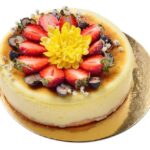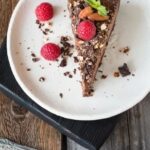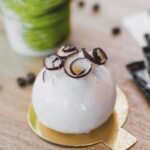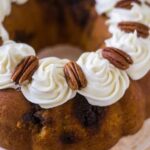Are you ready to learn how to decorate a one layer cake? One layer cakes may not have the height of multi-layer confections, but they are beloved for their simplicity and charm.
In this article, we will explore the art of decorating a one-layer cake, proving that it can be just as fun and creative as decorating a multi-layer cake. From choosing the right flavor to mastering essential frosting techniques, we will guide you through every step of the process.
When it comes to one layer cakes, the options for decoration are endless. Whether it’s for a special occasion or simply to satisfy a sweet craving, learning how to decorate a one-layer cake can bring joy and satisfaction. In this comprehensive guide, we will highlight the beauty and versatility of one-layer cakes and show you how to turn them into stunning works of art.
Throughout this article, we will provide tips and techniques on choosing the right flavor, preparing your cake for decoration, mastering frosting techniques, incorporating fresh fruit and flowers, experimenting with piping and design ideas, adding finishing touches, and presenting your creation. By the end of this journey, you’ll be equipped with all the knowledge and inspiration needed to create a beautifully decorated one-layer cake for any occasion.
Choosing the Right Cake Flavor
When it comes to decorating a one-layer cake, choosing the right cake flavor is essential in creating a cohesive and visually appealing dessert. The flavor of the cake not only complements the decoration but also sets the tone for the overall aesthetic. There are several popular cake flavors that work particularly well with a one-layer cake, each offering its unique characteristics and pairing options.
Popular Cake Flavors
One classic choice for a one-layer cake is vanilla, known for its simplicity and versatility. Chocolate is another beloved flavor that can add richness and depth to the overall look of the cake. For those looking for something more adventurous, flavors like lemon, coconut, or red velvet can provide a pop of color and flavor that can enhance the decoration.
Matching Flavor With Decoration
Once you have chosen the flavor for your one-layer cake, it’s important to consider how it will complement the overall aesthetic of the decoration. For example, a light and airy vanilla cake may pair well with pastel-colored frosting and floral decorations for a feminine and elegant look. On the other hand, a rich chocolate cake could be adorned with bold, vibrant colors and geometric designs for a modern and eye-catching display.
Pairing Options
When considering how to match the flavor with the decoration, don’t forget about pairing options such as fillings or toppings that can enhance both the taste and visual appeal of the cake. Fresh fruit fillings can add bursts of color and freshness to light cakes, while rich caramel or chocolate ganache can complement decadent flavors like red velvet or dark chocolate.
By carefully choosing both the flavor of the cake and its accompanying elements, you can create a beautifully decorated one-layer cake that is as delicious as it is stunning.
Essential Tools and Supplies
When it comes to decorating a one-layer cake, having the right tools and supplies is essential to achieve a professional and polished look. Here are some of the necessary items you will need:
- Piping bags: Invest in a set of reusable piping bags in various sizes to accommodate different decorating techniques. These bags allow for precision when applying frosting or creating intricate designs on your cake.
- Offset spatula: An offset spatula is an indispensable tool for smoothing out frosting and creating clean edges on your cake. Its angled blade makes it easier to maneuver around the sides of the cake without getting your hand in the way.
- Different types of frosting: Depending on your design and flavor preferences, you may need different types of frosting such as buttercream, cream cheese frosting, or ganache. Each type offers unique textures and flavors that can enhance the overall appeal of your one-layer cake.
In addition to these essential tools, you may also want to consider investing in piping tips for creating decorative designs, a turntable for easy frosting application, and a bench scraper for achieving a smooth finish on the sides of your cake.
Remember that having high-quality tools and supplies not only makes the decorating process more manageable but also ensures a professional-looking result. It’s worth investing in these items if you plan on making one-layer cakes regularly or for special occasions.
Preparing the Cake
Before you can begin decorating your one-layer cake, it’s crucial to ensure that the cake is properly prepared. This includes trimming and leveling the top to create a smooth and even surface for decorating. To start, place your cooled cake on a flat surface and, using a long serrated knife, carefully trim off any excess from the top to create an even layer.
Once the top is leveled, it’s important to make sure that the sides of the cake are straight as well. Using a gentle sawing motion with your knife, trim any uneven or protruding parts of the cake until you achieve a straight and uniform shape.
After trimming and leveling the cake, it’s essential to remove any loose crumbs from the surface before applying frosting or decorations. You can do this by gently brushing off any crumbs with a clean pastry brush or lightly spreading a thin layer of frosting over the entire cake as a “crumb coat”. This will help seal in any loose crumbs and provide a smooth foundation for your final decorative touches.
| Tools and Supplies | Explanation |
|---|---|
| Serrated Knife | Used to evenly trim the top of the cake. |
| Cake Leveler | An optional tool that can be used to evenly level the top of the cake. |
| Pastry Brush | Helps in gently removing crumbs from the cake’s surface. |
Basic Frosting Techniques
When it comes to decorating a one-layer cake, mastering basic frosting techniques is essential for creating a visually appealing and professional-looking finish. Whether you prefer a smooth and sleek appearance or a textured and rustic look, the right frosting technique can elevate the overall presentation of your cake.
Smooth Finish
To achieve a smooth finish on a one-layer cake, it’s important to start with a crumb coat. This thin layer of frosting seals in any crumbs and provides a base for the final layer of frosting. Once the crumb coat has set, use an offset spatula to apply a thicker layer of frosting evenly across the top and sides of the cake. Work methodically to smooth out any imperfections and create clean edges.
Textured Finishes
For those looking to add texture and visual interest to their one-layer cakes, there are several creative options to consider. One popular technique is the “rustic swirl,” where the frosting is swirled onto the cake in an organic and uneven manner using an offset spatula. Another option is to use a fork or comb tool to create beautiful patterns and textures in the frosting.
Achieving Texture on a One-Layer Cake
When working with a one-layer cake, it’s important to remember that the small surface area may require a lighter touch when applying textured finishes. Be mindful of not overpowering the cake with too much texture, as this can detract from its simplicity. Experiment with different tools and techniques on a smaller scale before committing to your final design.
By mastering these basic frosting techniques, you can enhance the visual appeal of your one-layer cake and make it truly stand out. Whether you opt for a sleek and polished finish or embrace textured designs, there’s no limit to the creative possibilities when decorating a single layer cake.
Decorating With Fresh Fruit and Flowers
Fresh fruit and flowers can add a touch of elegance and natural beauty to a one-layer cake. When it comes to decorating with fresh elements, it’s important to choose fruits and flowers that are in season and will complement the flavor of the cake.
For example, a lemon-flavored cake can be adorned with fresh blueberries and edible flowers for a refreshing and vibrant look. It’s essential to consider the color coordination of the fruits and flowers with the overall aesthetic of the cake.
When using fresh fruit for decoration, it’s important to prepare them properly by washing and drying them thoroughly. This ensures that they are clean and free from any dirt or pesticides. Additionally, cutting the fruit into uniform slices or shapes can add a polished and professional look to the cake.
When it comes to flowers, it’s crucial to use edible varieties that have not been treated with any chemicals. Edible flowers like roses, pansies, or violets can be used to embellish the cake, adding a pop of color and sophistication.
Placement of fresh fruit and flowers on the cake is key to achieving an appealing design. It’s best to distribute them evenly across the surface of the cake, paying attention to balance and visual appeal.
Grouping fruits in clusters or creating a cascading effect with flowers can create a stunning presentation. Color coordination also plays an important role in creating a cohesive look – for instance, pairing bright strawberries with delicate white blooms for contrast or choosing complementary colors for a harmonious design.
Ultimately, decorating a one-layer cake with fresh fruit and flowers allows for endless creativity and personalization. Whether you prefer a minimalist approach with subtle accents or an extravagant display of colorful blooms, incorporating natural elements adds an element of freshness and sophistication to your one-layer cake creation.
Piping and Design Ideas
When it comes to decorating a one-layer cake, there are endless creative possibilities for piping and design. One of the most popular and versatile techniques is using piping bags to create intricate patterns and designs on the cake’s surface.
Floral patterns, in particular, are a beautiful way to add a touch of elegance to a one-layer cake. Using different colored frosting, you can pipe delicate flowers such as roses, daisies, or peonies onto the cake to create a stunning visual effect.
In addition to floral patterns, geometric shapes offer a modern and sophisticated look for decorating a one-layer cake. From simple lines and shapes to more intricate designs like chevrons or polka dots, the use of geometric patterns can add a contemporary flair to the cake’s appearance. By using different piping tips and techniques, you can create visually appealing geometric designs that will impress both aesthetically and artistically.
For those looking to personalize their one-layer cake, adding customized messages or names with frosting is an excellent way to make the cake more meaningful. Whether it’s for a birthday, anniversary, or other special occasion, piping personalized messages onto the cake allows for a unique and heartfelt touch. Using contrasting colors and various fonts, you can create beautiful lettering that adds sentiment and charm to the overall design.
These piping and design ideas provide inspiration for individuals looking to decorate a one-layer cake in creative and visually striking ways. With the right tools, practice, and imagination, decorating a single layer cake can be just as enjoyable and fulfilling as decorating multi-tiered cakes typically seen at special events.
| Piping & Design Ideas | Benefits |
|---|---|
| Floral Patterns | Adds elegance & sophistication |
| Geometric Shapes | Offers modern & stylish look |
| Personalized Messages | Makes it unique & sentimental |
Finishing Touches and Presentation
In conclusion, decorating a one-layer cake can be just as enjoyable and creative as working on a multi-layer cake. By choosing the right cake flavor and preparing the cake properly, you set the stage for a beautiful and delicious masterpiece. Essential tools and supplies, including piping bags and different types of frosting, are crucial in achieving the desired look for your one-layer cake.
Once the basic frosting techniques are mastered, the fun part begins with decorating using fresh fruit, flowers, and creative piping designs. The final touches such as edible glitter, sprinkles, or a decorative cake topper can elevate the overall look of the cake and make it truly stand out. Presentation is also key in showcasing your creation, so make sure to consider tips for serving and displaying your one-layer cake to impress your guests.
Overall, there are endless possibilities when it comes to decorating a one-layer cake. From simple yet elegant designs to more intricate patterns and decorations, the key is to let your creativity shine through. With patience and practice, anyone can create a stunning one-layer cake that not only looks amazing but tastes incredible as well. So go ahead and have fun experimenting with different decorating techniques to turn your one-layer cake into a work of art.
Frequently Asked Questions
How Do You Frost a Single Layer Cake?
Frosting a single layer cake is quite simple. Start by placing the cake on a cardboard round, then use a spatula to spread a thick layer of frosting over the top of the cake.
If you want to get creative, consider adding some decorative touches like swirls or patterns with the spatula or a piping bag. Just be sure to spread the frosting evenly for a polished look.
How Do You Make a Plain Cake Look Fancy?
Making a plain cake look fancy can be easily achieved with some simple decorating techniques. One easy way is to dust the top of the cake with powdered sugar or cocoa powder using a fine mesh sieve for an elegant finish.
Another option is to add fresh fruit, edible flowers, or even gold leaf as eye-catching garnishes. For a more elaborate look, consider using colored frosting, fondant decorations, or intricate piping designs.
What Do You Put Between Cake Layers?
When it comes to filling cake layers, there are many delicious options to choose from. For a classic combination, try spreading a thin layer of fruit preserves or curd between the layers for added flavor and moisture.
Another popular choice is to use buttercream icing which can be flavored in countless ways – from chocolate and coffee to citrus and almond. If you’re feeling indulgent, consider filling the layers with ganache, mousse, or even caramel for an extra special touch.

Welcome to my blog about home and family. This blog is a place where I will share my thoughts, ideas, and experiences related to these important topics. I am a stay-at-home mom with two young children. I hope you enjoy reading it! and may find some helpful tips and ideas that will make your home and family life even better!





